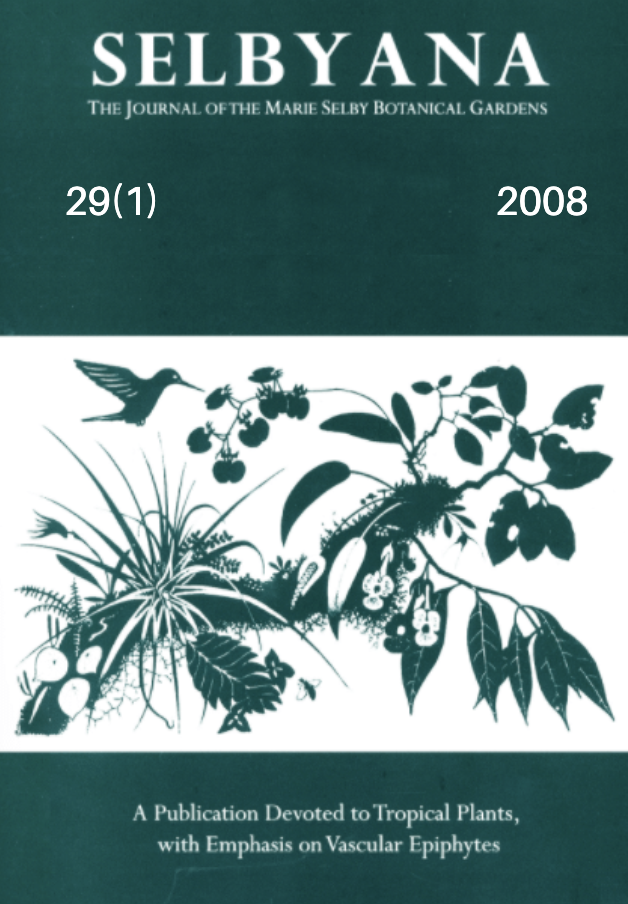Abstract
The structural variation of pollinia and pollinaria in Orchidaceae is discussed. Pollinia and pollinaria are restricted to two (of the five) orchid subfamilies: Orchidoideae and Epidendroideae. The attributes of pollinia and pollinaria of these subfamilies are commented on and discussed. Pollinia and pollinaria also occur in the plant family Apocynaceae, in the subfamilies Asclepiadoideae and Periplocoideae, but these are structurally different from those found in the family Orchidaceae. A number of morphological features of orchid pollinaria are informative taxonomically and ecologically. These features are briefly discussed and examples are given. The recent description of the first unequivocal fossil orchid (Meliorchis caribea; Orchidoideae: Goodyerinae) from a pollinarium attached to an insect pollinator is briefly discussed. This example is used to illustrate the use of informative morphological and palynological characters. A fascinating new perspective, the possibility of species identification using DNA sequencing from pollinia or pollinaria attached to pollinators, is also discussed. Suggestions and future avenues of research focusing on orchid pollination are given.
Open Access and Copyright Notice
Selbyana is committed to real and immediate open access for academic work. All of Selbyana's articles and reviews are free to access immediately upon publication. There are no author charges (APCs) prior to publication, and no charges for readers to download articles and reviews for their own scholarly use. To facilitate this, Selbyana depends on the financial backing of the Marie Selby Botanical Gardens, the hard work and dedication of its editorial team and advisory board, and the continuing support of its network of peer reviewers and partner institutions.
Authors are free to choose which open license they would like to use for their work. Our default license is the Creative Commons Attribution-NonCommercial 4.0 (CC BY-NC 4.0). While Selbyana’s articles can be copied by anyone for noncommercial purposes if proper credit is given, all materials are published under an open-access license with authors retaining full and permanent ownership of their work. The author grants Selbyana a perpetual, non-exclusive right to publish the work and to include it in other aggregations and indexes to achieve broader impact and visibility.
Authors are responsible for and required to ascertain that they are in possession of image rights for any and all photographs, illustrations, and figures included in their work or to obtain publication or reproduction rights from the rights holders. Contents of the journal will be registered with the Directory of Open Access Journals and similar repositories. Authors are encouraged to store their work elsewhere, for instance in institutional repositories or personal websites, including commercial sites such as academia.edu, to increase circulation (see The Effects of Open Access).
